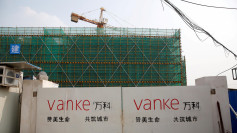Chinese construction company owner Cai Zhonghui used to be a laborer in a construction company until he managed to earn enough to establish his own. With 100 workers on various projects across eastern China, he believes that the industry is due for an alarming shock.
Money Control bared the challenges that Chinese real estate is currently facing. There are obvious reasons behind it, mostly compounded by materials costs being almost out of reach and harder approval from credit offices. The caution is not without cause, however; Beijing is trying to find ways to shore up the economy without hurting its citizens. Rules have been eased by the government, but private construction company owners like Zhonghui are still apprehensive about taking on new projects, unwilling to take unnecessary risks.
The construction company owner further clarified that companies were choosier because they wanted to lower the risks. Whereas before, they would jump at the chance to tackle a new project, they are now more apprehensive about undertaking these.
Projects have taken longer because of a combination of factors both from regulations and other work hindrances. It wasn't always like that, as another Money Control report showed. Home prices in China had accelerated previously to a two-year high, which showed that Beijing's ongoing efforts have an effect on home markets. It was meant to jumpstart the economy, bringing along a waning property market with it.
The August estimates of that recent growth rose 1.4 percent in August from a month earlier, marking the fastest gain ever since 2016. It also marked a round of 40 straight months where the price increased. The regulations back then were much tighter, placed in the protection of Chinese citizens looking for homes for the first time.
Right now, prices have continued to rise, and builders are feeling the strain. Builders rely on materials producers to buy the stuff they needed, but since prices have started going up, these materials producers chose to shut down plants. This is also due to an environmental policy meant to curb the pollution these plants produced.
Materials like cement and others have risen by about 29 percent. Given that 60 percent of a building's cost goes to purchasing these materials, it's easy to see why the prices of structures have also started going up. Rules and regulations have steadily been eased to a certain point by the central government, although it remains to be seen how this 'problem' works itself out.





